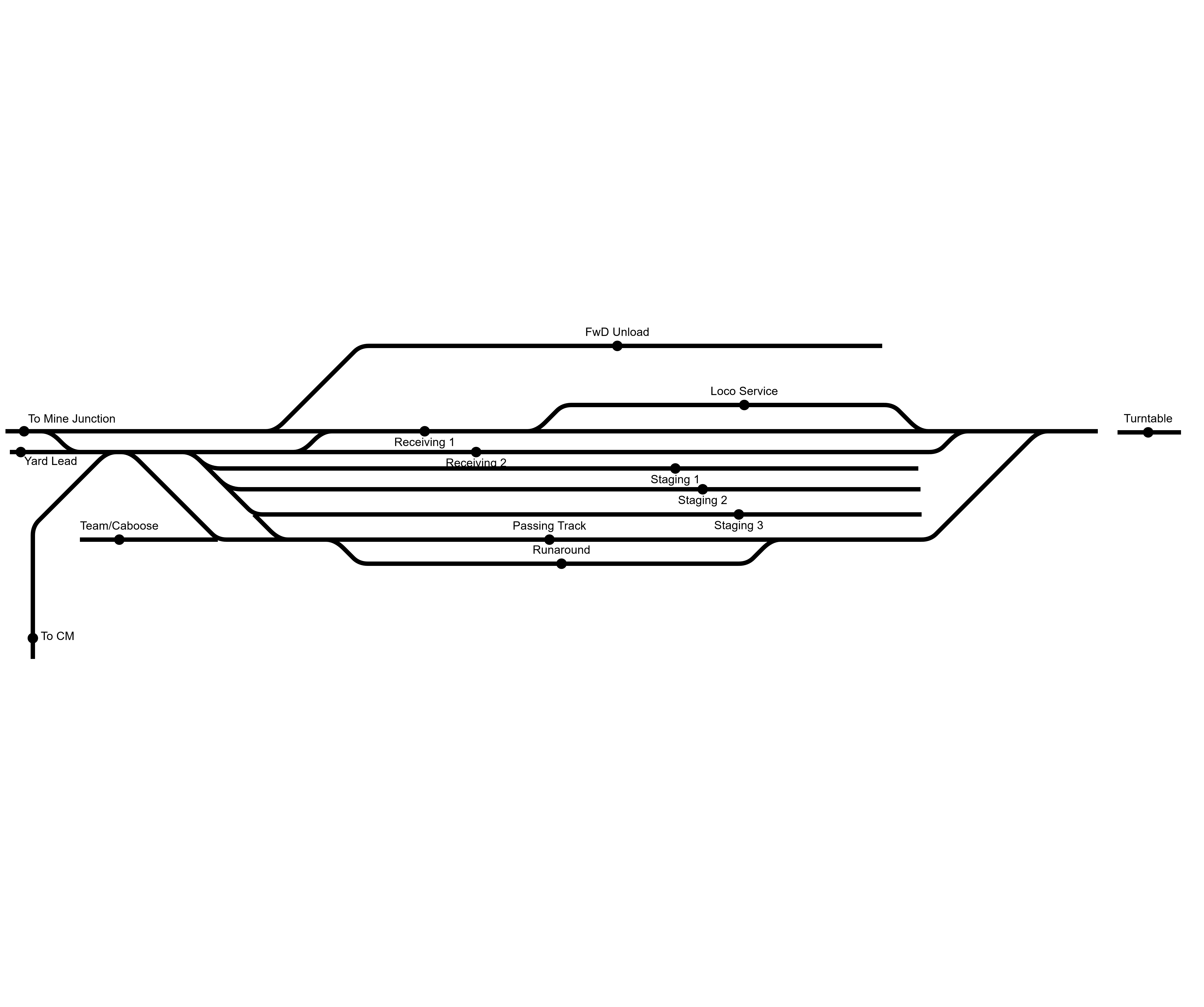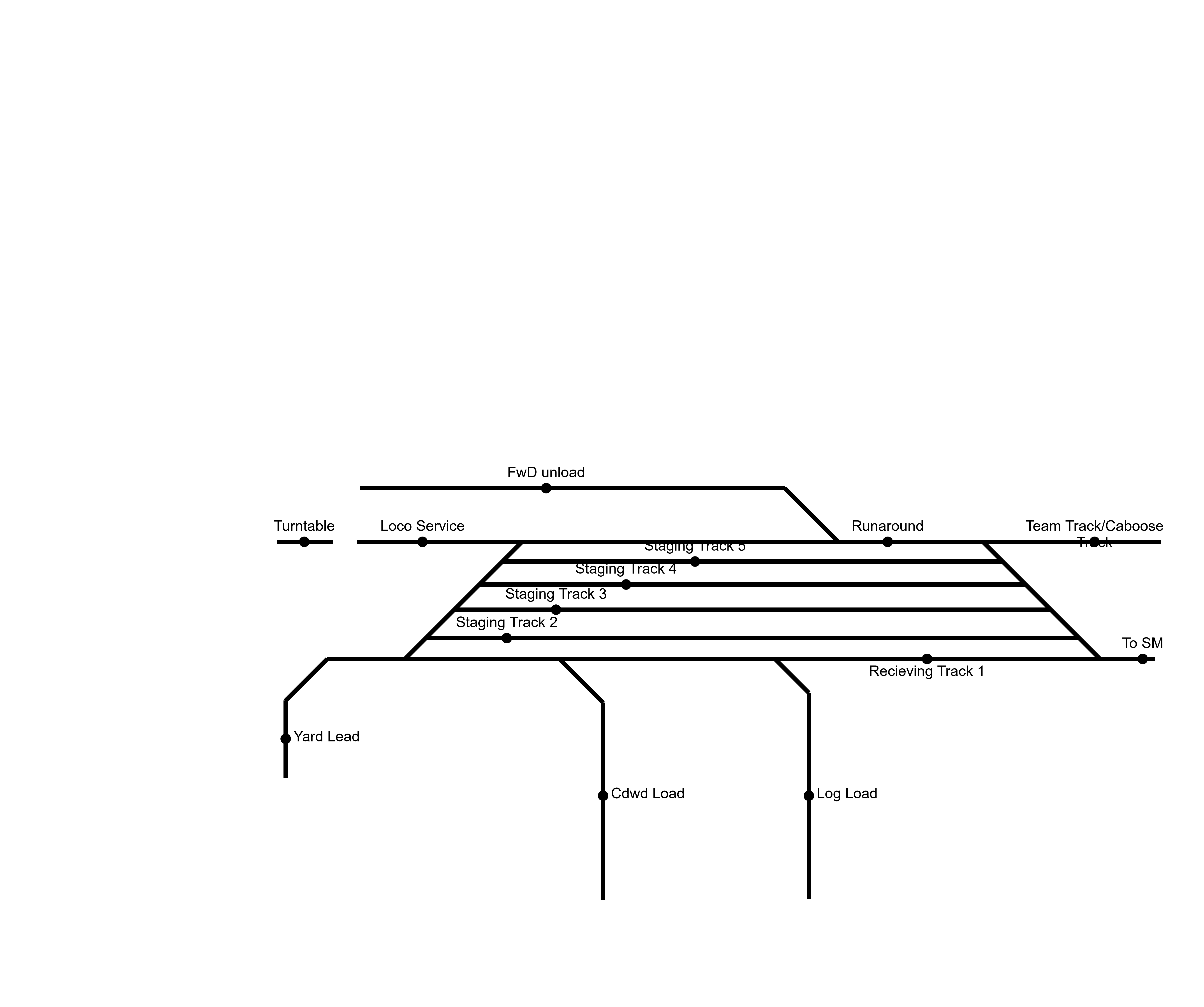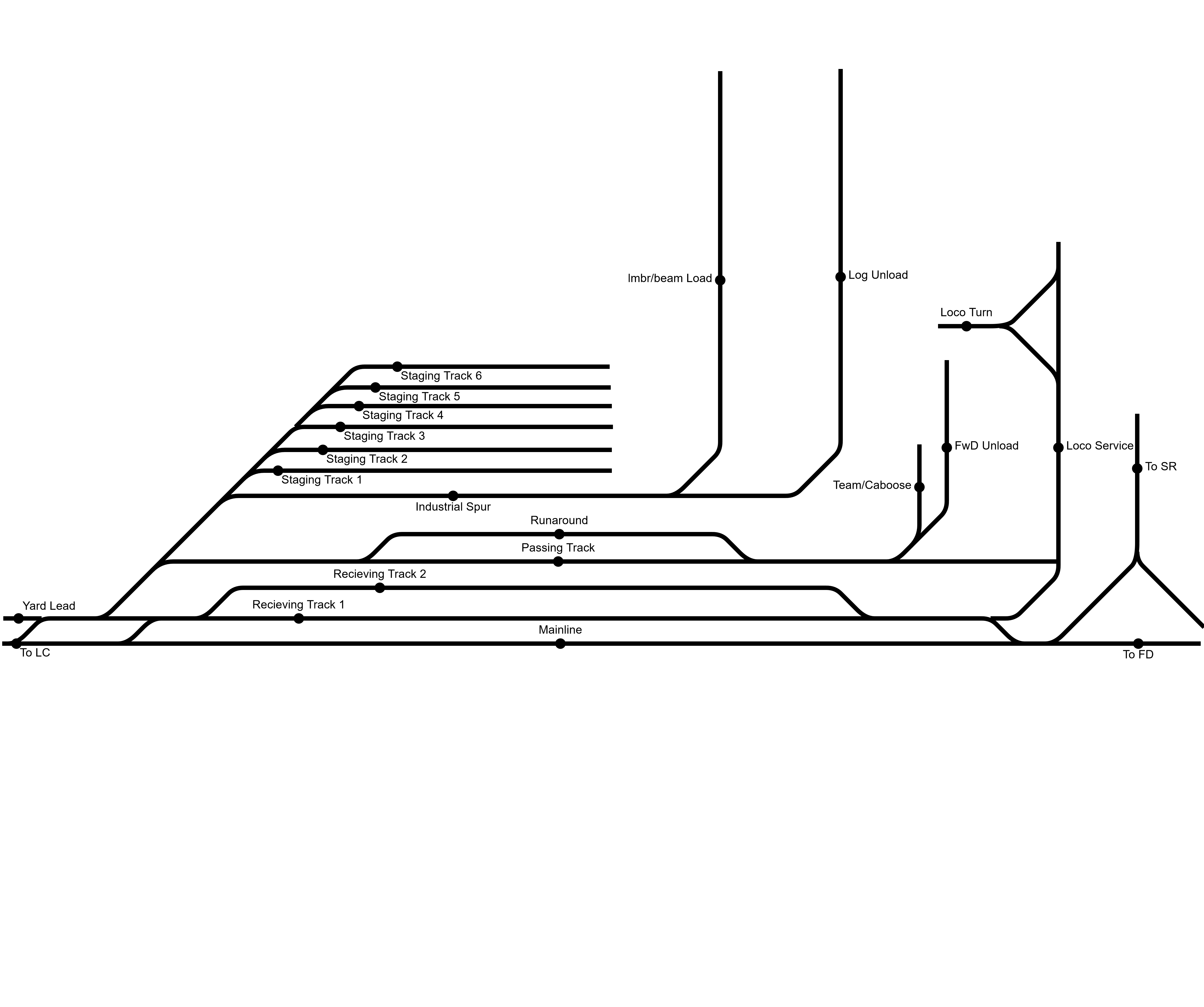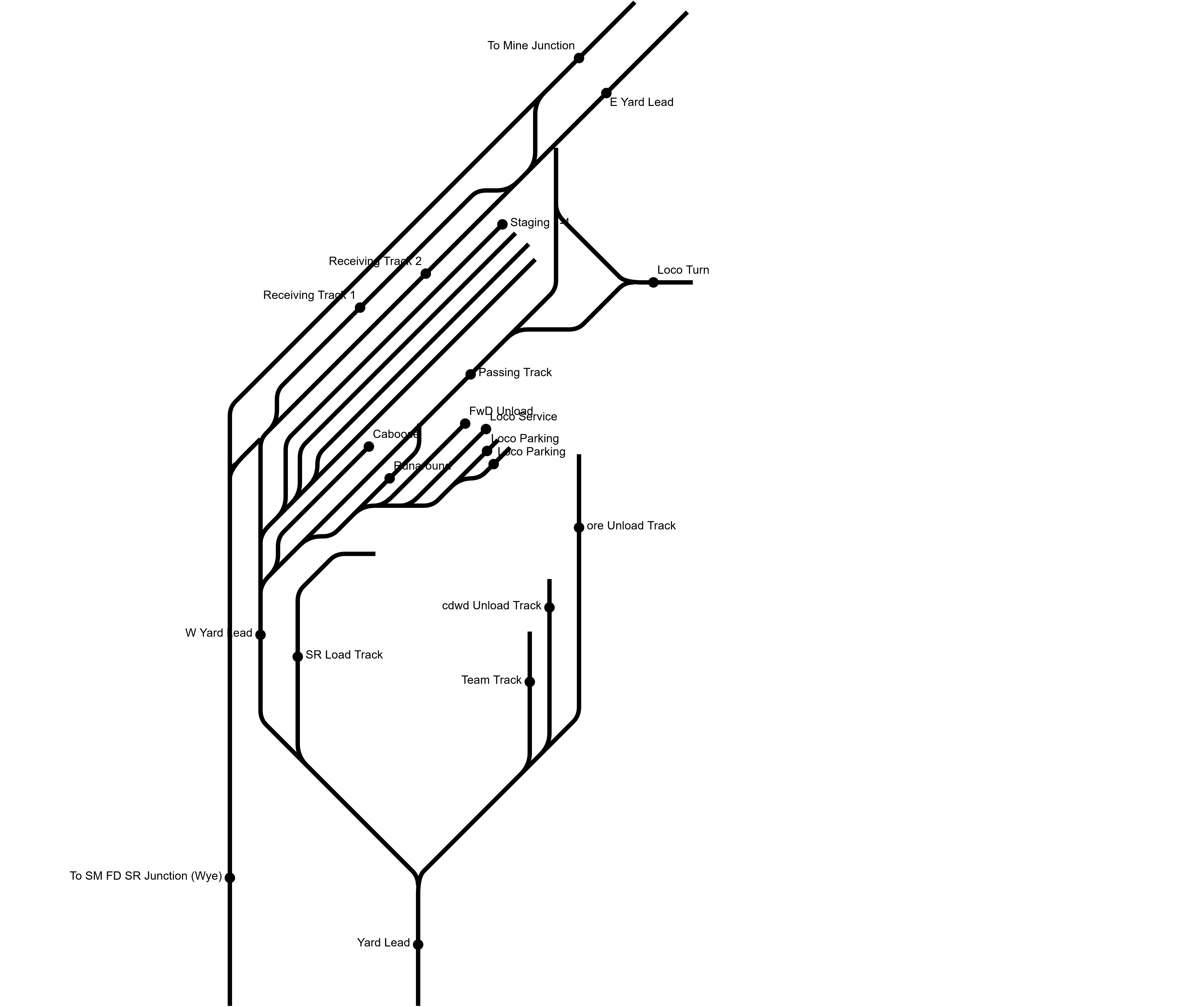Some tips on making railroads more effective.
Foxhole Universal Railroad Making (Best Practices)
A lot of players, including myself, are excited to tinker with the new logistics tools being added to the game in 1.0. But trains, by their nature, can be really frustrating to get working efficiently. Here are some basic best practices to get your trains running on time.
TLDR
- Look at picture examples
- KISS Rule
- Build yard leads
- Keep loco at head end of train (except armored trains)
- Don’t foul the main
- Don’t Highball in the yard
In the end, players will need to figure their own best practices for what is feasible in the game. But hopefully the following info will help streamline some of the headaches of managing a railroad in an mmo. (Isn’t that a first?)
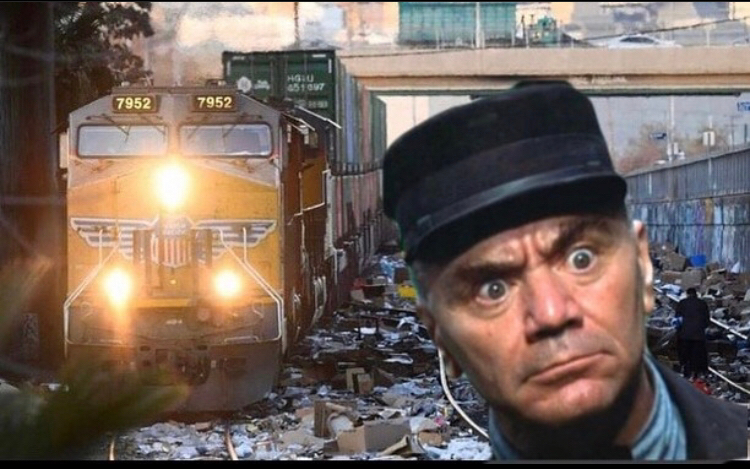
Railyard Purpose
Railyards are logistical mid and end points where cargo is dispatched and distributed, and setting them up effectively is critical to mitigating traffic jams. How we set them up is dependent on the needs of the industry being served.
Typically, railyards will service inbound and outbound trains with a switcher/shunter locomotive. This locomotive crew’s job is to move traincars within the yard they are assigned, and not to take trains out on the mainline. This job is critical to free up mainline crews from having to do it themselves, and they can head out with the next consist.
Switchers are also tasked with building consists in preparation for the next train, so it is critical to have cars available in “storage”, similar to maintaining a stock of open containers at scrapyards in the current game.
Runaround Yard
It is easy when designing a yard to over-complicate things, but depending on its purpose it can be as simple as 2 tracks: A loading/unloading track, and a runaround.
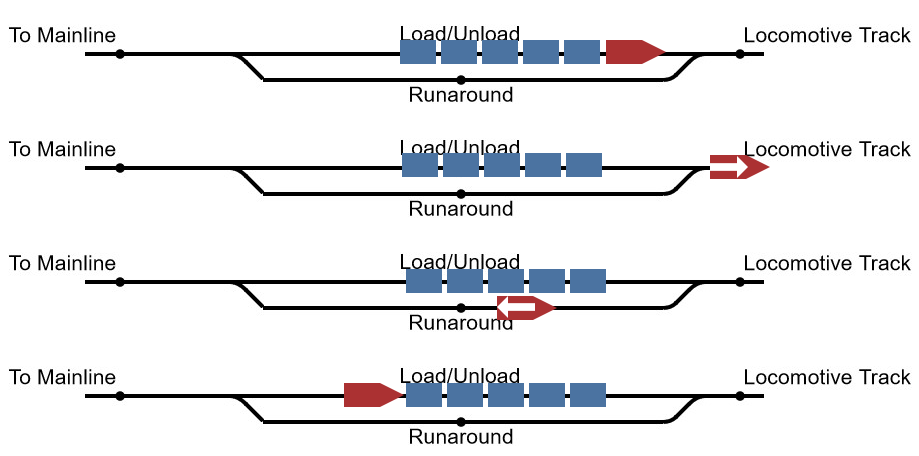
When the train enters the yard, it positions its consist in between the switches on either end, and decouples. Cargo is loaded or unloaded, depending on function, and the locomotive pulls forward to the end of track. With the switch flipped, the locomotive runs around the consist and couples to the other end, placing the locomotive at the “front” of the consist in preparation for departure.
It is critical that the length of track between the switches is long enough to fit the consist. If it fouls the switches, the locomotive will not be able to run around. The length of track on the far end only needs to be long enough to fit the locomotive and tender (coal car).
This style of yard is perfect for loading raw resources, or for simple passenger stations to drop troops off near the front. Although it is typically a terminal station (at the end of a line), it can also be used for through stations, allowing trains to stop and interact with cargo while not blocking the mainline for other traffic.
Industrial Yards
We can expand the operating capacity of a railyard by increasing trackage, but just throwing down track is asking for congestion. The following features will be critical for building effective yards.
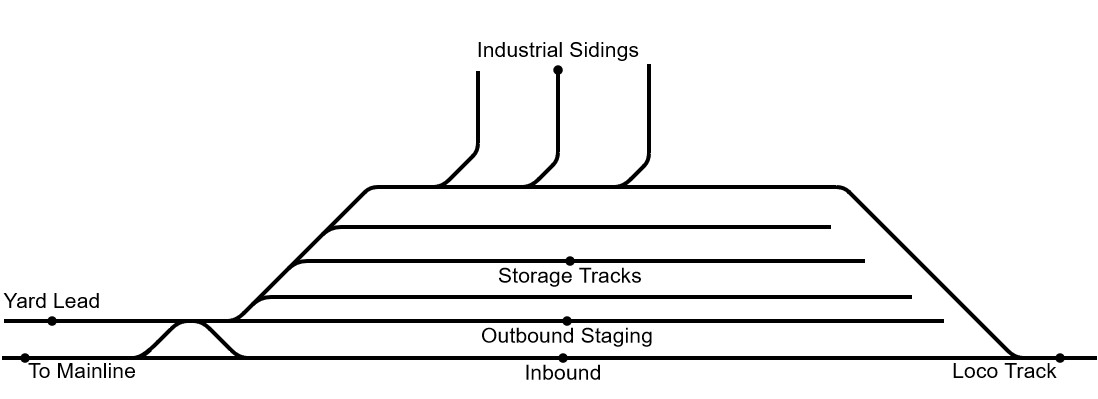
- The Mainline is the through track that connects various destinations. It is critical that the yards we build do not interfere, or foul, the main. This way, other trains can continue to pass while work is taking place.
- In order to free the main, trains stopping in a yard need an inbound/outbound track. As mentioned previously, this track allows a road locomotive to decouple from its consist, and pick up a new one and depart. It is critical that the inbound/outbound track be kept open by the switcher crew, so that trains aren’t stuck waiting on the main for another consist. If space allows, consider separating the inbound and outbound to different tracks, so that ready consists are prepared and can depart immediately.
- The Yard Lead is possibly the most critical track when building an effective yard. It must be built on the opposite end of all other yard tracks, and the switcher locomotive typically operates from the yard lead end to avoid getting stuck behind consists. The yard lead allows us to switch yards without fouling the main. It must be as long as the longest consist being shunted. For example, if an inbound train is to be shunted to a storage track, and it is 10 cars long, if the yard lead is shorter than 10 cars + locomotive, you will have to split the consist, which will take much longer.

- Storage tracks are necessary to provide room for cars to be staged in preparation for work. It is ill advised, however, to spam tons of storage tracks, as it takes up significant real estate and complicates the yard. You only need as many storage tracks as traffic to maintain throughput.
- Industrial spurs/sidings are tracks that branch off of your yard ladder to interact with specific loading/unloading docks. These can be as simple as a track next to a crane, allowing the crane to load/unload containers of flatbed cars. What is critical is to make sure these industrial sidings branch off of the yard lead, so cars can be taken directly from staging to the industry and back by switchers.
- If your yards have terminating sidings at both ends, then a runaround track becomes necessary. This allows the switcher to run around the consist to keep it from getting trapped.
- The yard ladder is a set of adjoined switches that integrate all the tracks in your yard like a spine. You can build one at either end, or on one end, of a set of tracks. Note in the diagram that yard ladders are straight along their “spine” and curve into the yard tracks. You do not want, for example, to build a left hand switch, then a curve, then another left hand, and so on. This will take up valuable real estate.
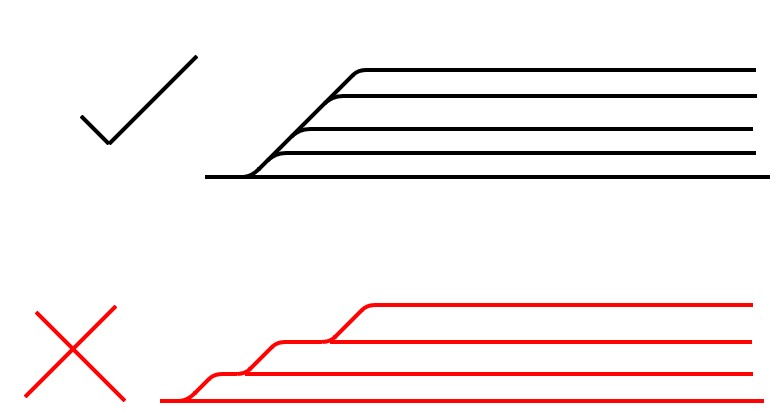
As of right now, we can only speculate, and pray, that the devs measured their switches correctly, so that when building a ladder they will maintain parallel, as I am sure they are presets and not splines.
An example of a two track main classification yard

Route Building
The Mainline refers to the major thoroughfare of track that connects major destinations. It can have any number of tracks, but will most likely be limited ingame to 1 or 2 tracks.
A 1 track mainline is possible, but will require passing tracks. Passing tracks parallel the main, and switches back into it. This allows trains going in opposite directions to pass each other, and allows higher priority trains to pass lower priority trains. The critical problem, however, is we have no signals as of yet. Without signals, determining right of way becomes a nightmare.

A double track mainline alleviates some problems. It is critical to determine if the network is right or left hand drive ahead of time. I recommend Collies drive right, and Wardens drive left, so when territory is captured it becomes a huge headache.
Double track mainlines require twice as much infrastructure, and junctions likewise become slightly more complicated. It is also recommended to integrate crossover points at intervals, either to allow trains to enter a yard from either direction, or to allow different priority trains to temporarily pass each other. The feasibility of double track will need to be tested.
A Spur line, or Branch line, conversely, is a lower trafficked track that typically serves 1 or a few industries. These spurs then switch into the mainline toward the nearest interchange/classification yard. These are almost exclusively 1 track, and can sometimes be serviced effectively by 1 road crew.
For example, a route that connects town A and town B, this route is the mainline. But in between is a coal mine. Instead of routing the whole mainline toward the coal mine, we build a spur that connects the coal mine to the main, so that coal can be delivered for processing.

Dispatching
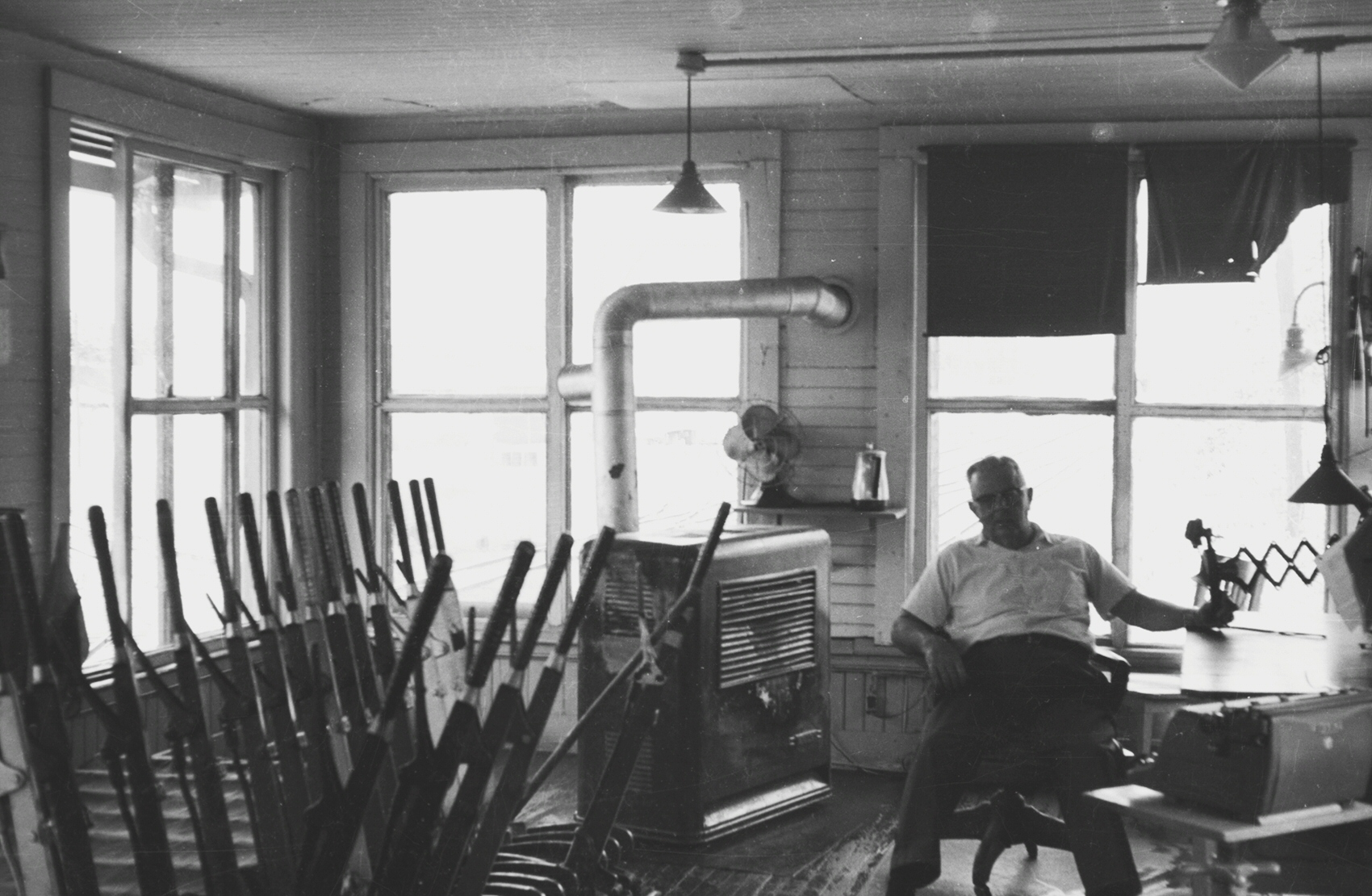
This is going to be the part that I believe will have the biggest growing pains. Logistics in Foxhole has already impressed me in the past with how organically salvage teams band together, and manage resource allocation over multiple regions, but trains are another tier above that.
I can only offer advice based on my experience dispatching with Railroads Online. Typically we would have operating sessions of ~20-24 people operating 8 locomotives in tandem. We used discord to communicate and divided roles depending on what position they were working. This will not scale to the sheer scope of managing a full rail network in an mmo, however.
At yards, the switch crew were the local dispatchers. Any movement that took place in the yard had to be cleared with them, while they also handled switching duties.
The bigger struggle is determining right of way on the mainline. Especially on single track mains, trains will not know if the road ahead is clear for them, although maybe building a radio network will provide visibility? Will trains show up on the minimap separately from other vehicles? How detailed will route maps be ingame? Right now it’s all speculation.
The more tools the devs give us to monitor the movement of rail traffic, the fewer traffic jams will occur. I don’t think people have realized how unprecedented the scope of this is.
I believe that some organizations will attempt to use this as an excuse to monopolize railroad management, but I see that as completely unnecessary. If networks are segmented properly, spur/branch lines will provide perfect opportunities for smaller groups to enjoy the trains, as well as providing real work and minimizing their footprint on more heavily trafficked mainlines. Communication is key.
Junction Caveat
Beware the transport tycoon player, their experiences managing railroad logistics has been damaged due to not being able to break apart consists.
There are very few instances where a full four way junction are actually applicable, because branch lines feed directly into mainlines, and mainlines typically follow a set course between major locations. Unlike tycoon games, trains travel back and forth between major nodes, where consists are split and combined toward the next major node. Tycoon games can’t do this, so, barring transfer yards, trains will go straight from origin to destination regardless of distance, which is unnecessary, and inefficient, for our application.
The exception is a through freight, or express passenger, those should be able to go straight to their destination.
Turning your locomotive around
As far as I can see, there really isn’t a huge incentive to even bother turning a locomotive around. Locomotives can couple to their front as easily as their back, and I doubt there is a speed difference either. However, if you absolutely insist on it, there are two ways to turn a locomotive around: The Wye, and the balloon track.
Just going to get it out of the way, balloon tracks are awful and no one should use them. Although convenient for turning entire consists around, even with the relatively tight turn radii ingame, they take up way too much room and add a lot more trackage to maintain.
The wye is your other option, unless they add a turntable. The ends of the wye only need to be as long as whatever is getting turned around. Although ahistorical, these might be effective for aiming railway cannons.
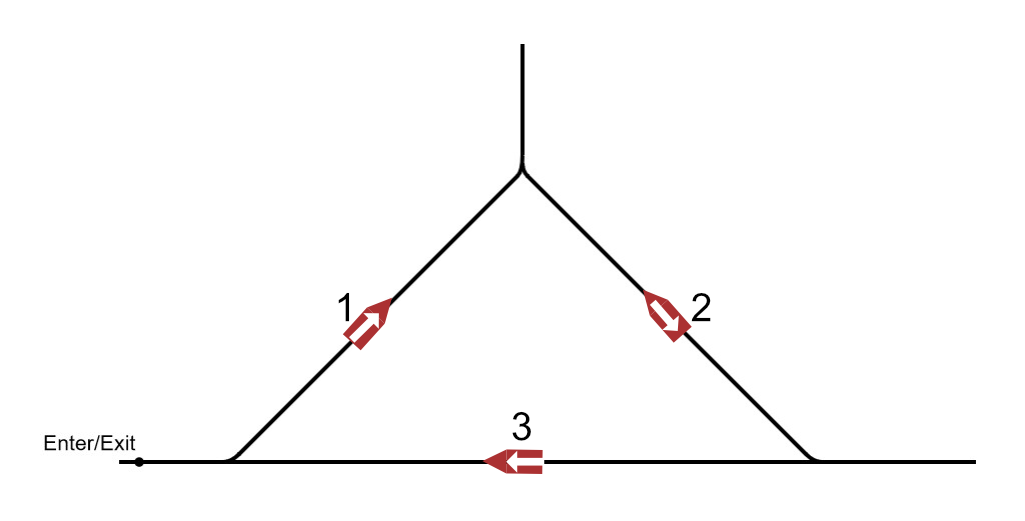
Other Examples
For fun, I’ve included several maps we used on my UP&SC RR in Railroads Online. Although not directly applicable to Foxhole, these are proven yard designs for multiman operation.
